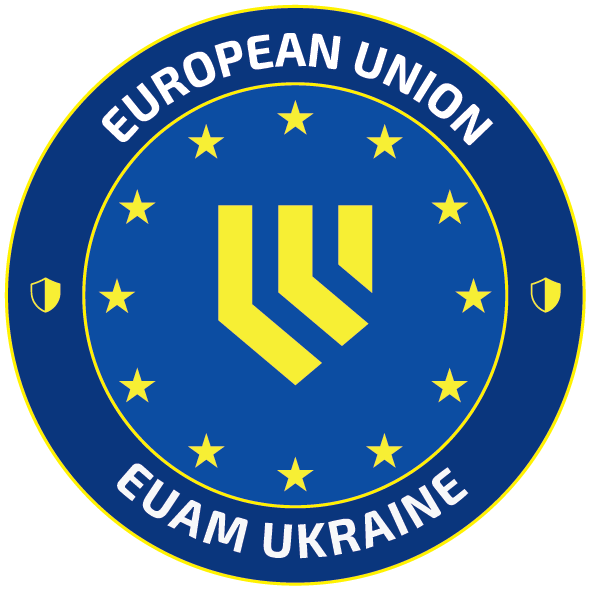The EU and Ukraine
The Common Foreign and Security Policy (CFSP) of the European Union was established by the Treaty of Maastricht in 1992. Among its aims are: to preserve peace and strengthen international security in accordance with the principles of the United Nations Charter; to promote international co-operation; and to develop and consolidate democracy and the rule of law and respect for human rights and fundamental freedoms.
The Amsterdam Treaty (1997) created the office of High Representative for CFSP, whose role is to co-ordinate EU foreign policy and, in conjunction with the rotating Presidency, speak on behalf of the EU in agreed foreign policy matters.
A major component of the CFSP is the Common Security and Defence Policy (CSDP). EUAM Ukraine is one of 11 CSDP missions conducted by the European Union globally.
On 1 December 2009, the Treaty of Lisbon entered into force. The Treaty created the European External Action Service, and the post of High Representative of the Union for Foreign Affairs and Security Policy. This post combines three functions: the Council’s representative for the CFSP, the President of the Foreign Affairs Council, and Vice-President of the Commission. At the moment, this post is held by Federica Mogherini.
European External Action Service: http://eeas.europa.eu/index_en.htm
On 27 June 2014, an EU-Ukraine Association Agreement was signed by European Union heads of State and Government and Ukrainian President Petro Poroshenko in Brussels. The Association Agreement was simultaneously ratified by the Verkhovna Rada and the European Parliament on 16 September 2014.
The Association Agreement is a pioneering document: it is the first agreement based on political association between the EU and any of the Eastern Partnership countries, and is unprecedented in its breadth (number of areas covered) and depth (detail of commitments and timelines).
Title 4 of the Association Agreement, which establishes a Deep and Comprehensive Free Trade Area (DCFTA), entered into force on 1 January 2016. The DCFTA opens up markets and addresses competitiveness issues, as well as the steps needed to meet EU standards and trade on EU markets.
The Agreement also focuses on support to core reforms, economic recovery and growth, and governance and sector cooperation in areas such as energy, transport and environment protection, industrial cooperation, social development and protection, equal rights, consumer protection, education, youth, and cultural cooperation.
It puts a strong emphasis on values and principles: democracy and the rule of law, respect for human rights and fundamental freedoms, good governance, a market economy and sustainable development.
Find out more on the EU’s relations with Ukraine here:
http://www.eeas.europa.eu/ukraine/index_en.htm
The Association Agreement
An Association Agreement, including a Deep and Comprehensive Free Trade Area, was negotiated in 2007-2011 and initiated in 2012. On 10 December 2012, the Council of the European Union adopted Conclusions on Ukraine that affirmed the EU’s commitment to signing the Agreement as soon as Ukraine had taken determined action and made tangible progress towards achieving the benchmarks set out in the Conclusions.
Relevant information materials and brochures:
signatures of the political provisions of the Association Agreement
the signatures of the Final Act
Brochure on the EU-Ukraine Association Agreement
EU-Ukraine Association Agreement – “What´s it all about? Q&A
EU-Ukraine Association Agreement – “What does the Agreement offer?”
EU-Ukraine Association Agreement – “Guide to the Association Agreement”
Brochure “EU-Ukraine Deep and Comprehensive Free Trade Area – a reading guide”
Ukraine and the World: Addressing Tomorrow’s Challenges Together


